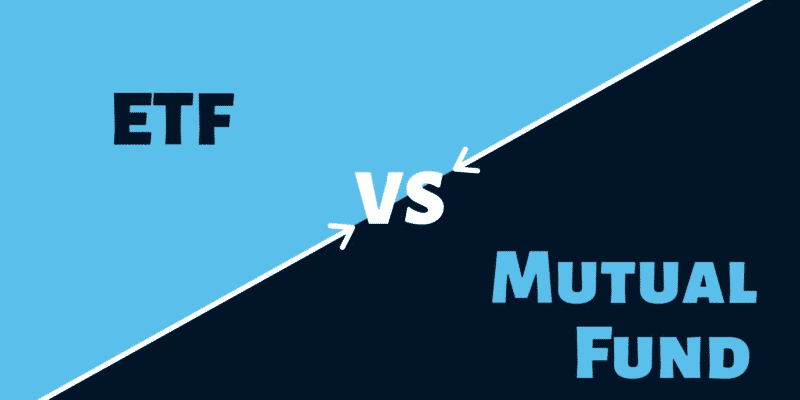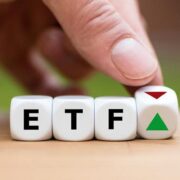In almost 30 years, the US ETF industry has grown from zero to $5.5 trillion in 2,200 funds. These funds are significantly different from mutual funds that have been around for a century. So which fund is best for an investor: ETF or mutual?
If you had $1000 to invest and you wanted to split it among 700 companies, you could place 700 buy orders, most of them in fractional shares. Very impractical. Or you can place a $1000 order for a fund that pools money from many investors and uses it to buy large positions of 700 shares.
In this respect, ETFs have the same structure as mutual funds.
What do mutual funds and ETFs have in common:
- Mutual funds and ETFs are investment instruments.
- The depositary and the auditor monitor the company’s activities.
- The funds are regulated by legislation. The Central Bank also oversees the activities of the funds.
- Both funds have a specific “entry threshold” — the minimum investment for a new investor.
However, they are usually relatively low, and even a novice investor can afford them. Moreover, the fund’s investment portfolio is always diversified to minimize risks and stabilize profitability. But why are ETFs better?
Reason №1. ETFs are traded like stocks.
Like Amazon stocks, ETFs are traded on the stock exchange all day long and have both a buy and a sell price. If the ETF is quoted at $60 to buy or $60.10 to sell, the market maker is willing to sell you the stock you want at $60.10 or get you out of it for $60. You enter and exit the fund, that is, through negotiations with an intermediary.
The old system of mutual funds works very differently. The purchase and sale of fund units occur once a day, and the fund operator manages this process. So, for example, if the idle fund portfolio is worth $60.05 per fund at the end of the trading day, all buys and sells occur at that price.
Reason №2. ETF uses specialized intermediaries.
Not all ETF stock market participants are the same. Some, called “authorized participants,” do more than buy and sell prices. They can create and redeem fund units. These intermediaries form the backbone of the fund’s liquidity.
If more investors want to enter the fund than they wish to exit, the price will rise above the stock portfolio’s value. At this stage, the authorized participant buys a basket of shares corresponding to the fund’s portfolio and exchanges this basket for a block of newly issued ETF shares. For an ETF that mimics the S&P 500, the trade could include 50,000 shares of the fund, worth $10 million. The middleman may have to buy $500,000 in Tesla, $350,000 from Facebook, and 498 other stocks. The newly created fund units add to the inventory of the intermediary.
If more investors want to exit, the process is reversed. An authorized member buys unwanted ETF shares with cash. He transfers a large block of ETF shares, receives shares in Apple, Amazon, etc., in return, and then sells those positions. The proceeds from 500 sales and purchases allow the intermediary to pay the money needed to purchase unwanted shares.
This roundabout way of receiving and withdrawing money from the fund in response to the population’s demand serves an essential purpose. In an old-fashioned mutual fund, the fund incurs transaction costs in the event of new money coming in or a massive exodus. All investors bear these costs in the fund, including those who buy and hold. With ETFs, the cost of trading is passed on to investors who come and go.
Reason №3. ETFs have a tax advantage.
When a mutual fund sells a position at a profit, it is required to distribute the profits made between its investments, which then must pay income tax. However, funds can get around this problem to a large extent.
This is for two reasons:
- They should rarely sell positions for cash. Instead, it is mainly trading stocks of Facebook, Apple, etc., for stocks of funds.
- They can choose the cheapest lots on Facebook and Apple for this exchange. This maneuver leaves the fund with high-value stocks. If he sells for cash, for example, to rebuild a portfolio, he is likely to experience a small or even net loss of capital at the end of the year. The distribution of capital gains in ETFs is rare.
This distinction between ETFs and mutual funds is not recognized. Congress could remove this by forcing ETFs to distribute taxable profits or tell mutual funds they don’t need to distribute winnings. Meanwhile, there is no difference in handling.
Reason №4. Most ETFs are index funds.
An index fund can track a broad index like the S&P 500 or a smaller model like clean energy stocks. In any case, he will have a reasonably stable portfolio that does not require much involvement from the portfolio manager. In addition, because they are less labor-intensive, passive index funds tend to have low fees.
Some ETFs are actively managed. These are only a fraction of the industry’s assets, but they are becoming more and more common.
The predominance of index funds in the ETF business explains why ETF management fees are, on average, lower than mutual fund fees. But there are many exceptions to this trend: expensive ETFs and cheap mutual funds.
Reason № 5. Investors must be selective.
Which is best for you: an ETF or a mutual fund with a very similar portfolio?
If you are interested in stocks and are shopping with a tax-deductible brokerage account, you are probably better off with an ETF. This is because price gains taxes will be deferred until you sell the ETF.
Whether you buy in an IRA or 401 (k), you may be indifferent to the capital gain allocation. The tax distinction between ETFs and mutual funds is also irrelevant in bond funds because bonds are not very expensive.
Long-term holders are likely to do better in ETFs for a different reason. They only incur the bilateral trade commission once and are spared the damage caused by the entry and exit of other investors.
Mutual funds are generally the best choice for contributors making small, regular contributions to a retirement account. This is because they are usually available in retirement plans with no sell load, while ETF purchases are likely to include supply/demand spreads and commissions.
Considering that there are many different ETFs on the exchange, choose them better carefully and responsibly.
Here’s what to look for when choosing:
- First, select the index that you would like to have in your investment portfolio.
- Within this index, establish the fund with the lowest commission.
- Check that the fund has been around for several years and that the fund is large enough.
The largest selection of ETFs is on American exchanges such as NYSE and NASDAQ.















Comments